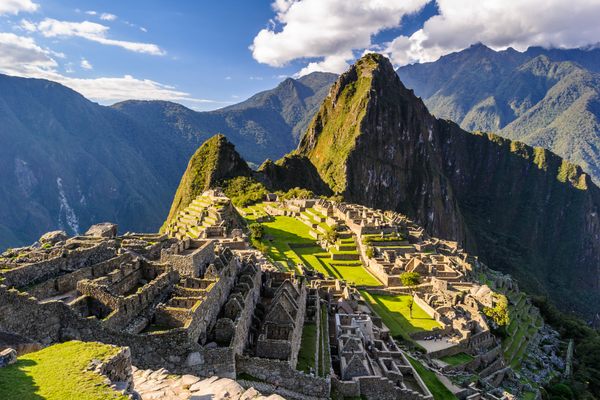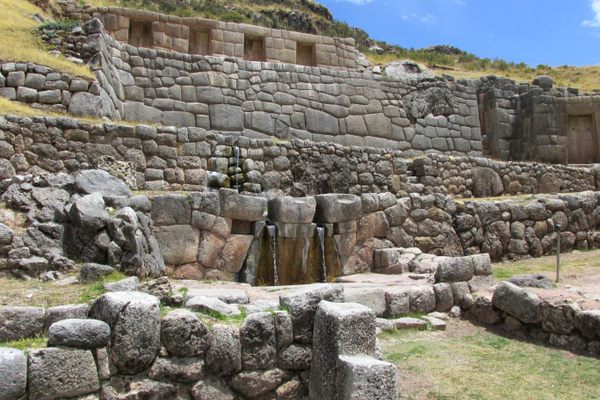Rumicolca
The Incas turned this ancient Wari aqueduct into an imposing defensive gate.
At first glance, Rumicolca appears to be an imposing stone “gate” controlling access to the main highway leading west to Cusco. But look closer and you’ll see signs of an earlier construction: a pre-Inca aqueduct built by the Wari civilization.
About 17 miles east-southeast of Cusco lies the sprawling Wari archaeological site of Pikillaqta. The site is hard to date, but may have been occupied from 500 to 1000 AD. It likely served as a feasting and ceremonial center.
Pikillaqta is a lesser-known archaeological site in the Cusco Region, but receives a steady stream of tourists thanks to its inclusion on the “Cusco Tourist Ticket,” which grants access to a number of sites in and around Cusco. One thing many tourists miss, however, is the nearby site of Rumicolca. It’s just a short walk along the main road leading up to the southeast of Pikillaqta. And while it can’t rival its neighbor in terms of acreage, it’s arguably more impressive.
The most pervasive archaeological theories about the origins of Rumicolca tend to agree that it was first built by the Wari civilization as an aqueduct. Along the top of the wall-like structure, which is now a mix of Wari and Inca construction, runs a channel that likely brought water to the nearby center of Pikillaqta. It’s also possible that the Wari built the aqueduct to serve a secondary function as a gate or control point along this important route.
A few centuries after the collapse of the Wari, the Incas expanded and fortified Rumicolca. It seems that these new empire builders were more interested in Rumicolca as a gate or control point. They reinforced sections with unmistakable Inca stonework: huge slabs of perfectly cut and perfectly joined andesite stone. It’s easy to see the difference between the Inca stonework and the far simpler Wari walls.
At their highest, the walls of Rumicolca reach up to 39 feet. Openings within the walls allowed travelers to pass through when given permission, and perhaps after paying a toll to the Inca soldiers guarding the entrance. If enemy forces arrived along the highway, Rumicolca would have proven a tough barrier to breach, delaying any attempts to march on Cusco from this direction.
Whether or not the Incas also used Rumicolca as an aqueduct is hard to confirm. But the water channel is still easy to see running along the top of the wall.
Know Before You Go
Rumicolca is easy to reach from Pikillaqta, just walk up the main road leading roughly to the southeast. It takes about 10 to 15 minutes on foot. Entrance is free.














Follow us on Twitter to get the latest on the world's hidden wonders.
Like us on Facebook to get the latest on the world's hidden wonders.
Follow us on Twitter Like us on Facebook